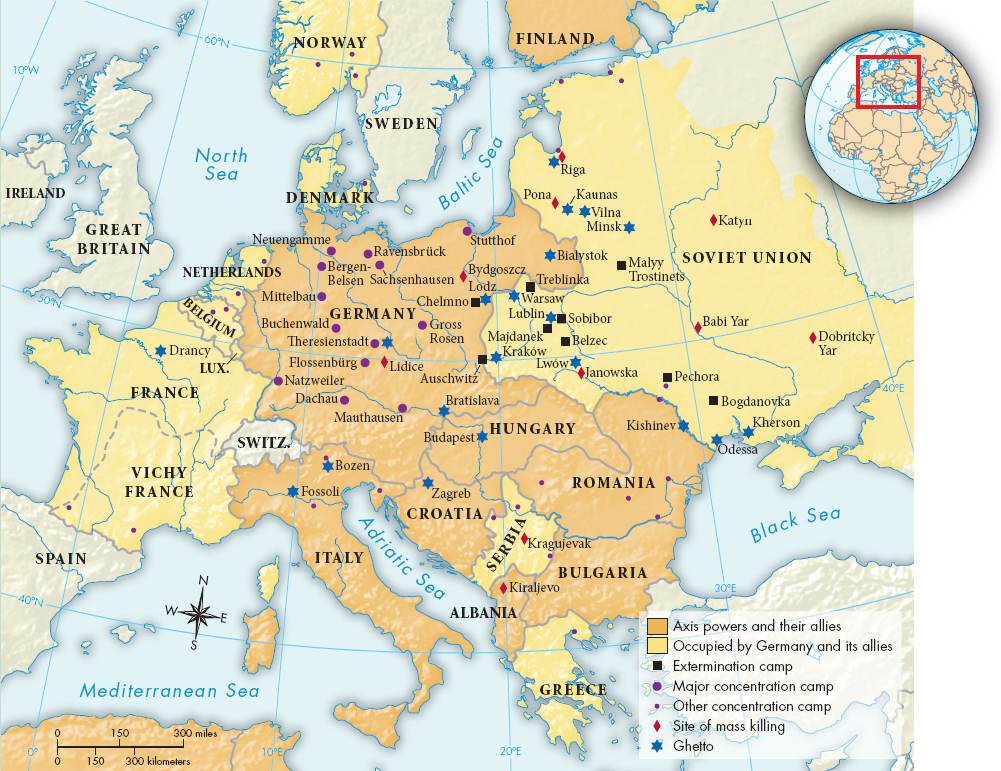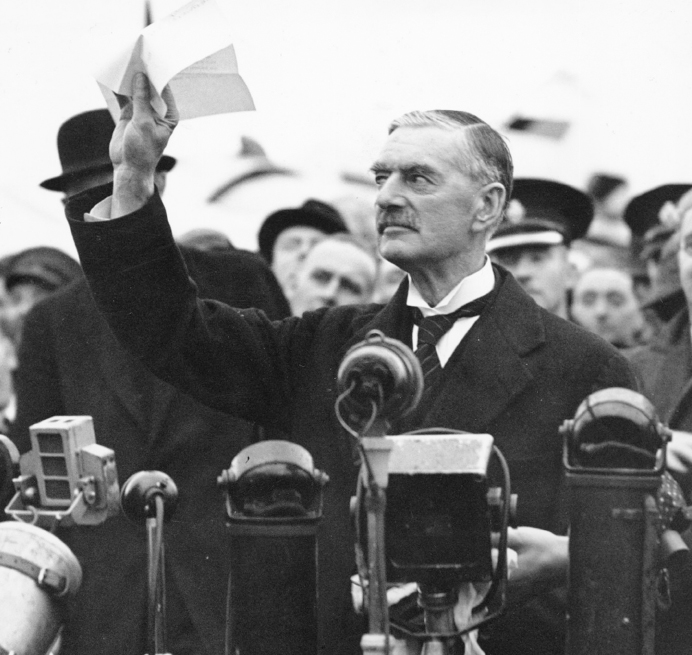Understanding Western Society
Printed Page 866
Chapter Chronology
The Holocaust
The ultimate abomination of Nazi racism was the condemnation of all European Jews and other peoples considered racially inferior to extreme racial persecution and then annihilation in the Holocaust, a great spasm of racially inspired mass murder.
As already described, the Nazis began to use social, legal, and economic means to persecute Jews and other “undesirable” groups immediately after taking power. Between 1938 and 1940, persecution turned deadly in the Nazi euthanasia (mercy killing) campaign, an important step toward genocide. Just as Germany began the war, some 70,000 people with physical and mental disabilities deemed by Nazi administrators to be “unworthy lives” who might “pollute” the German race, were murdered in cold blood. The victims were mostly ethnic Germans, and the euthanasia campaign was stopped after church leaders and ordinary families spoke out. The staff involved took what they learned in implementing this program with them to the extermination camps the Nazis would soon build in the east (Map 27.4).

MAP 27.4
The Holocaust, 1941–1945The leadership of Nazi Germany established an extensive network of ghettos and concentration and extermination camps to persecute their political opponents and those people deemed “racially undesirable” by the regime. The death camps, where the Nazi SS systematically murdered millions of European Jews, Soviet prisoners of war, and others, were located primarily in Nazi-occupied territories in eastern Europe, but the conditions in the concentration camps within Germany’s borders were almost as brutal.
The German victory over Poland in 1939 brought some 3 million Jews under Nazi control. Jews in German-occupied territories were soon forced to move into urban districts termed “ghettos.” In such ghettos, hundreds of thousands of Polish Jews lived in crowded and unsanitary conditions, without real work or adequate sustenance. Over 500,000 people died under these conditions.
The racial violence reached new extremes when Germany invaded the Soviet Union in 1941. Three military death squads known as Special Task Forces (Einsatzgruppen) and other military units moved systematically from town to town, shooting Jews and other target populations. In this way the German armed forces murdered some 2 million civilians.
In late 1941 Hitler and the Nazi leadership, in some still-debated combination, ordered the SS to implement the mass murder of all Jews in Europe. The Germans set up an industrialized killing machine to imprison and murder Jews and other so-called undesirables, and to exploit their labor before they died. In the occupied east, the surviving residents of the ghettos were loaded onto trains and taken to camps such as Auschwitz-Birkenau, where over 1 million people — the vast majority of them Jews — were murdered in gas chambers. Some few were put to work as expendable laborers. The Jews of Germany and then of occupied western and central Europe were likewise rounded up and sent to the camps. By 1945 the Nazis had killed about 6 million Jews and some 5 million other Europeans, including millions of ethnic Poles and Russian prisoners of war (POWs). (See “Individuals in Society: Primo Levi.”)

A “Transport” Arrives at AuschwitzUpon arrival at Auschwitz in May 1944, Jews from Subcarpathian Rus, a rural district on the border of Czechoslovakia and Ukraine, undergo a “selection” managed by Nazi officers and prisoners in striped uniforms. Camp guards will send the fittest people to the barracks, where they will probably soon die from forced labor under the most atrocious conditions. The aged, ill, very young, or otherwise infirm will be murdered immediately in the Auschwitz gas chambers. The tower over the main gate to the camp, which today opens onto a vast museum complex, is visible in the background. Vashem [Public Domain] Panstwowe Museum Auschwitz-Birkenau w Oswiecimiu)

